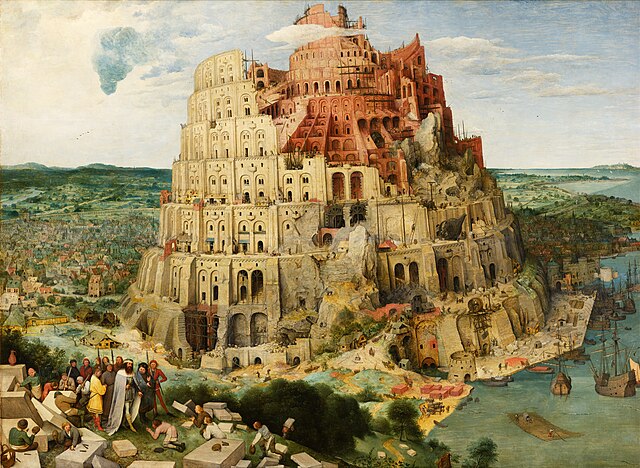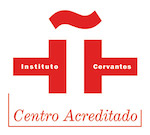Bcnlip Intercultural Contest – Tower of Babel

Call for Entries
Bcnlip presents a unique exhibition transcending linguistic and cultural borders: an artistic celebration of language and cultural diversity worldwide. This exhibition will result from an inspiring contest to which we invite our students to participate, aiming to merge art with intercultural experiences.
Through representations provided by each participant of the Tower of Babel, a universal symbol of linguistic diversity, we will immerse ourselves in a visual journey inviting reflection on the significance of language and the interconnection between diverse cultures enriching our world.
Join us to explore this universe of artistic expression carrying a message of understanding, integration, and appreciation for the multiple ways in which language and culture intertwine in our global reality.
Summary
Contest Theme: The central theme of this contest is an artistic reflection on linguistic diversity, primarily using the Tower of Babel as inspiration.
Participants: Students from the BCNLIP group (includes courses in any language, the Bcnlip Foundation, and courses from IBP Formación Profesional).
Techniques and Formats: Various artistic techniques will be accepted, such as painting, drawing, sculpture, photography, collage, video, performance, among others.
Registration: Until November 30th, 2023. The works will be exhibited in a collective exhibition starting on January 12th, 2024.
Registration and Participation Requirements:
- Fill out the form available at the link: https://forms.gle/XWEBRzZKPbNNe1ig8
- It’s not necessary to present your work at the time of registration, but you must submit it sufficiently in advance for us to set up the exhibition on time. Therefore, consider technical criteria such as printing time, if applicable, for example.
- Sending previous references of your artistic works is essential for consideration.
Jury:
- Sofía Pariente, Director of the Bcnlip Group
- Giovanny Cavanno, Curator and Interdisciplinary Visual Artist
- Marian Velázquez, Art Historian and Professor
- Sofiia Volkova, Contemporary Dancer
- Nikita Tikhoniuk, Visual Artist and Tattoo Artist
- Cassius Guimarães, Digital Designer
- Students and Popular Votes
Prizes:
- First Prize: Visit to the Dalí Museum in Figueres for 2 people (includes travel, meal, and entry)
- Second Prize: Immersive experience at Casa Batlló (2 tickets)
- Third Prize: 2 guided visits to the MNAC
- All participants will receive a 3-credit certificate and must actively participate in the realization and promotion of the art event.
- The award ceremony will be on Friday, January 26th.
Disqualification Criteria:
- Works that infringe copyright or are plagiarized will be immediately disqualified.
- Pieces not related to the proposed theme will be automatically disqualified.
- Works containing offensive, discriminatory content, or could be interpreted as such will be disqualified.
- Entries not meeting established technical requirements, such as low image quality, inappropriate format, or incomplete shipping information, will be excluded from selection.
Intellectual Property: Participants will retain the copyrights to their works. However, by submitting them to the contest, they grant permission to the organization to use them for promotional and dissemination purposes of the competition.
Disclaimer: The Bcnlip Group reserves the right to select participants and their works according to its evaluation criteria, applied impartially, and considering the contest’s objectives. The school’s decision regarding the selection of works for the exhibition is final and not subject to questioning or appeals.
Questions to work on the exhibition: Participants may present their works based on one or more of the propositions below:
- Why did Jehovah separate the languages?
- Do you think having many languages is a punishment or a blessing?
- Do you believe in a universal language? What is it? Music? Art? Mathematics? Non-verbal language that allows communication with animals and babies?
- Noam Chomsky defended the idea of the existence of a universal grammar, integrated into human genetic heritage. According to Chomsky, a pattern is available from birth to which different existing languages adapt. Do you agree? Do you believe there is a universal source as in the Tower of Babel?
- Languages have their own lives, but it’s difficult to understand. They are born, grow, develop, age, and die. What do you think about this? At what stage is your mother tongue? Should efforts be made to preserve them? What are the causes of the birth and death of a language?
- What do you think humanity will speak in 500 years?
- Is language always synonymous with a nation? Is language the primary characteristic of a national identity?
- How can the language we speak affect our personality?
- Currently, there are 7,097 languages in the world for 7.9 billion people. Is that many or few? Imagine a world with a single language, how would it be?
- Different cultures seek hidden meanings in language, which they can relate to other areas of human knowledge. In gematria, for example, a word can represent multiple values depending on the encoding method used. If the numerical sum of the characters of two different words is identical, an analogy between them is suggested, implying a possible contextual and even esoteric connection. What do you think about this topic?
References:
The Tower of Babel
The myth of the Tower of Babel dates back to the Bible and tells the story of a united humanity trying to build a tower that reaches the sky to challenge God. Their goal was to create a structure that kept them united and avoided being scattered throughout the earth. However, God, seeing humanity’s ambition and pride, confused their languages, causing them to speak different languages, leading to incomprehension and the inability to continue construction. The resulting linguistic diversity led to the dispersion of humanity throughout the world. This story symbolizes language and cultural diversity, as well as the barriers and challenges that arise from a lack of understanding and communication among them.
Beyond the classical interpretation of the myth speaking of humanity’s pride in intending to build a tower and divine punishment through the confusion of languages, the Babel construct can be considered both a challenge and a reward. It speaks about our human condition and its most characteristic expression: language diversity. This diversity differentiates us while serving as a common element and cohesion within a group. Linguistic multiplicity defines our human condition because we are not gods. The word associated with a geographical space, shared history, traditions, and customs of a community is what truly makes us human—finite and distinct beings.
The challenge—or divine punishment, according to the biblical vision—lies in understanding each other, building bridges, recognizing and accepting our differences through and with words, using language in myriad ways to reach others and to allow others to reach us, despite the difficulties and unfamiliarity involved.
From a broader perspective, the Babel narrative exemplifies how mythological and religious narratives often contain symbolic elements addressing fundamental aspects of human experience, including language and its political characteristics. A single language emerges as an expression of authoritarianism and political control of words in communication. In this sense, it warns us about the dangers of attempting to impose a single language or worldview that denies and eliminates any possibility of differentiation. The confusion of languages is then perceived as a divine resistance against the excessive concentration of power and as a means to promote diversity, decentralization, and respect for cultural and linguistic differences, among others.
Bcnlip is a space that builds bridges through teaching and the experience of a common language, Spanish, while respecting our differences, identities, and traditions. It neither denies nor stifles diversity but seeks mutual recognition through dialogue.
Biblical Passage about the Tower of Babel: Genesis, Chapter 11
All men speak the same language — They build the Tower of Babel — Jehovah confuses their language and scatters them over all the earth — Among the generations of Sem is counted Abram, whose wife was Sarai — Abram leaves Ur and settles in Haran.
1 Now the whole earth had one language and one speech.
2 And it came to pass, as they journeyed from the east, that they found a plain in the land of Shinar, and they dwelt there.
3 Then they said to one another, “Come, let us make bricks and bake them thoroughly.” They had brick for stone, and they had asphalt for mortar.
4 And they said, “Come, let us build ourselves a city and a tower whose top is in the heavens; let us make a name for ourselves, lest we be scattered abroad over the face of the whole earth.”
5 But Jehovah came down to see the city and the tower which the sons of men had built.
6 And Jehovah said, “Indeed the people are one, and they all have one language, and this is what they begin to do; now nothing that they propose to do will be withheld from them.
7 Come, let Us go down and there confuse their language, that they may not understand one another’s speech.”
8 So Jehovah scattered them abroad from there over the face of all the earth, and they ceased building the city.
9 Therefore its name is called Babel because Jehovah confused the language of all the earth from there, and Jehovah scattered them abroad over the face of all the earth.
3.4. Noam Chomsky – More information about universal grammar: https://cvc.cervantes.es/ensenanza/biblioteca_ele/diccio_ele/diccionario/gramuniversal.htm
3.4. Visual Art – The Tower of Babel, oil painting on canvas by Pieter Brueghel the Elder (1526-1569)

3.5. Language and Architecture: New Babylon, by Constant https://www.elconfidencial.com/alma-corazon-vida/2022-06-02/ciudad-utopia-constant-urbanismo-historia-filosofia_3433932/






